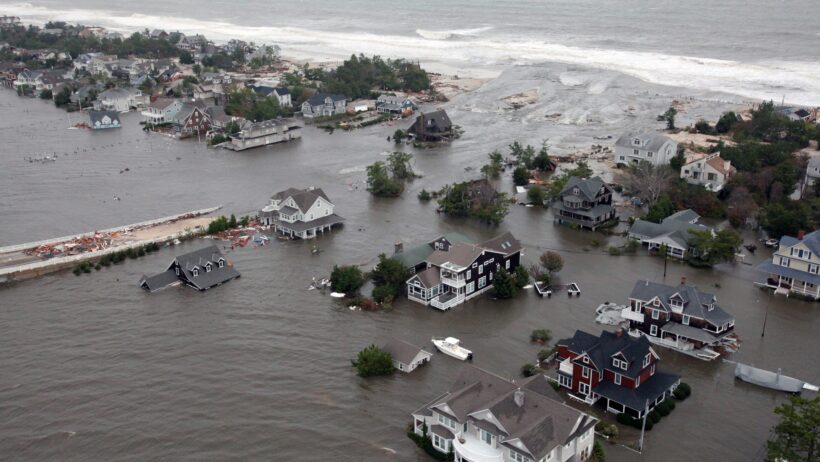As the Earth’s climate undergoes transformative change propelled by anthropogenic factors, one of the most concerning manifestations is the rise in sea levels. This phenomenon is not uniform globally, affecting regions in vastly different ways. To understand the full scope of this issue, it is essential to dissect the underlying causes, gauge regional differences, and investigate the broader implications. In doing so, we can attain a more nuanced comprehension of rising sea levels and their consequential impact on society, ecosystems, and economies worldwide.
Understanding the Mechanics: What Drives Sea Level Rise?
The rise in sea levels can be attributed to both thermal expansion of ocean waters and the melting of terrestrial ice reserves. As global temperatures escalate due to greenhouse gas emissions, ocean water absorbs heat, causing it to expand. Simultaneously, ice sheets and glaciers — particularly those in Greenland and Antarctica — are succumbing to accelerated melting, contributing copious volumes of freshwater into our oceans.
Thermal expansion accounts for approximately half of the observed sea level rise, while the melting ice sheets are responsible for significant elevations. The Intergovernmental Panel on Climate Change (IPCC) projects that global sea levels could rise by up to two meters by the end of this century if trends remain unchecked. The scientific consensus illustrates a relentless progression toward what could be a catastrophic environmental reality.
Regional Disparities: Is Everyone Affected Equally?
While sea level rise is a global phenomenon, its repercussions are profoundly localized. Certain areas are particularly vulnerable due to geographic and climatic factors. Coastal cities such as Miami, New York, and Jakarta are grappling with heightened risks as they sit in low-lying regions, making them more susceptible to flooding and storm surges.
In the United States, for instance, relative sea level is rising significantly faster along the East Coast and Gulf of Mexico than in the West. This disparity can be attributed to geological factors, including land subsidence and ocean currents, which create an uneven table for climate impacts. In addition, cities built on reclaimed land or delta systems, such as New Orleans and Bangkok, face compounded risks due to both sea level rise and local subsidence.
Furthermore, developing nations often find themselves at a stark disadvantage. The vast majority of the world’s most vulnerable populations live in low-lying coastal regions where poverty and inadequate infrastructure exacerbate the impact of rising seas. Countries like Bangladesh and the Maldives are particularly at risk of becoming uninhabitable, potentially resulting in humanitarian crises with millions of climate refugees displaced.
Economic Consequences: A Tidal Wave of Impact
The economic ramifications of rising sea levels are equally profound and multifaceted. Coastal industries—including tourism, fisheries, and shipping—stand to suffer critical setbacks due to inundation, erosion, and changing marine ecosystems. The insurance industry is grappling with the costs of increased flooding, and the financial markets are keenly aware of the risks posed to coastal properties and infrastructure investments.
Infrastructure—critical to advancing urban development—faces immense pressure from rising seas. Projects must now factor in future elevations in water levels, demanding additional investment costs and innovative engineering solutions. Ports, roads, and public utilities must adapt, or risk losing their functionality altogether. Consequently, cities are forced into a cycle of reactive measures rather than proactive planning, creating an economy perpetually on the brink.
Turning the Tide: Mitigation and Adaptation Strategies
As the evidence mounts, so too does the imperative to act boldly and decisively. While the retreat from rising waters may not be an option for many, innovative adaptation strategies can mitigate some of the most severe impacts. These include construction of living shorelines, investment in green infrastructure, and the implementation of policies that prioritize resilience for susceptible communities.
Additionally, an emphasis on reducing carbon emissions globally is imperative. The reliance on renewable energy sources, energy efficiency, and sustainable practices could curb the acceleration of climate change and associated sea level rise. Conservation of existing ecosystems, such as mangroves and wetlands, offers natural barriers to coastal erosion and floods, highlighting the multifaceted benefits of ecological preservation.
Looking Ahead: A Call to Action
In conclusion, sea level rise stands as a harbinger of change, threatening ecosystems, economies, and societies around the world. The disparity of its impacts—rooted in geographic, economic, and social factors—demands a multi-faceted approach to create robust solutions. Addressing this urgent challenge isn’t solely an environmental matter; it’s a call for equity, innovation, and global collaboration. By fostering a keen awareness and commitment to actionable strategies, we can aspire to conserve our coastal communities and safeguard our shared future.








